Set Review ➟ 42083 Bugatti Chiron (Part 4)
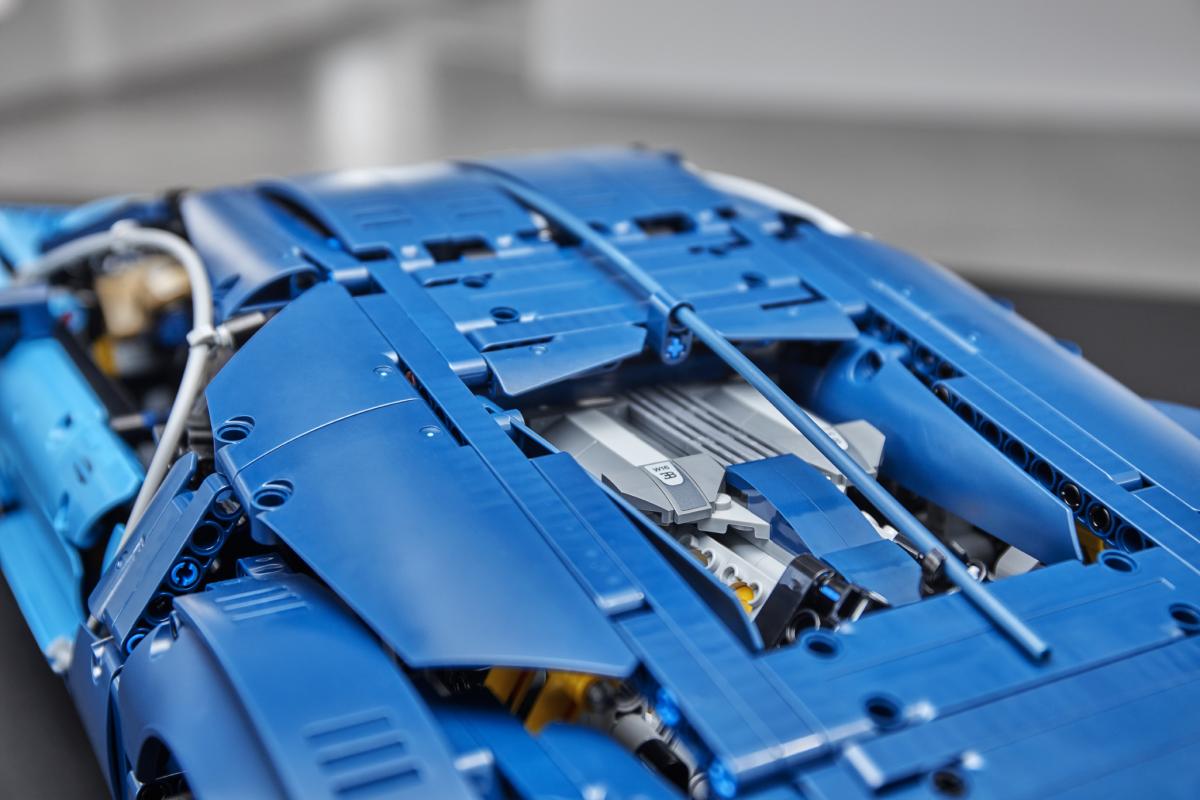
You thought I had finished? I did say there would be an intermission! Anyway, I had planned to post earlier, but something came up. I’m sure you know how that is. As a matter of fact, this set deserves your full attention (and mine) while building so taking a little extra time to take in all the details and techniques is absolutely worth it.
As I mentioned in the third part of this review, most of the mechanics have now been finished, and it is time to concentrate of the exterior of the car.
ACT 4 – SCENE 1
The base already looked wide, but as soon as you start attaching the mudguards (what a terrible word for a car like the Bugatti – better use wheel arches!) you notice the model is going to be even wider!
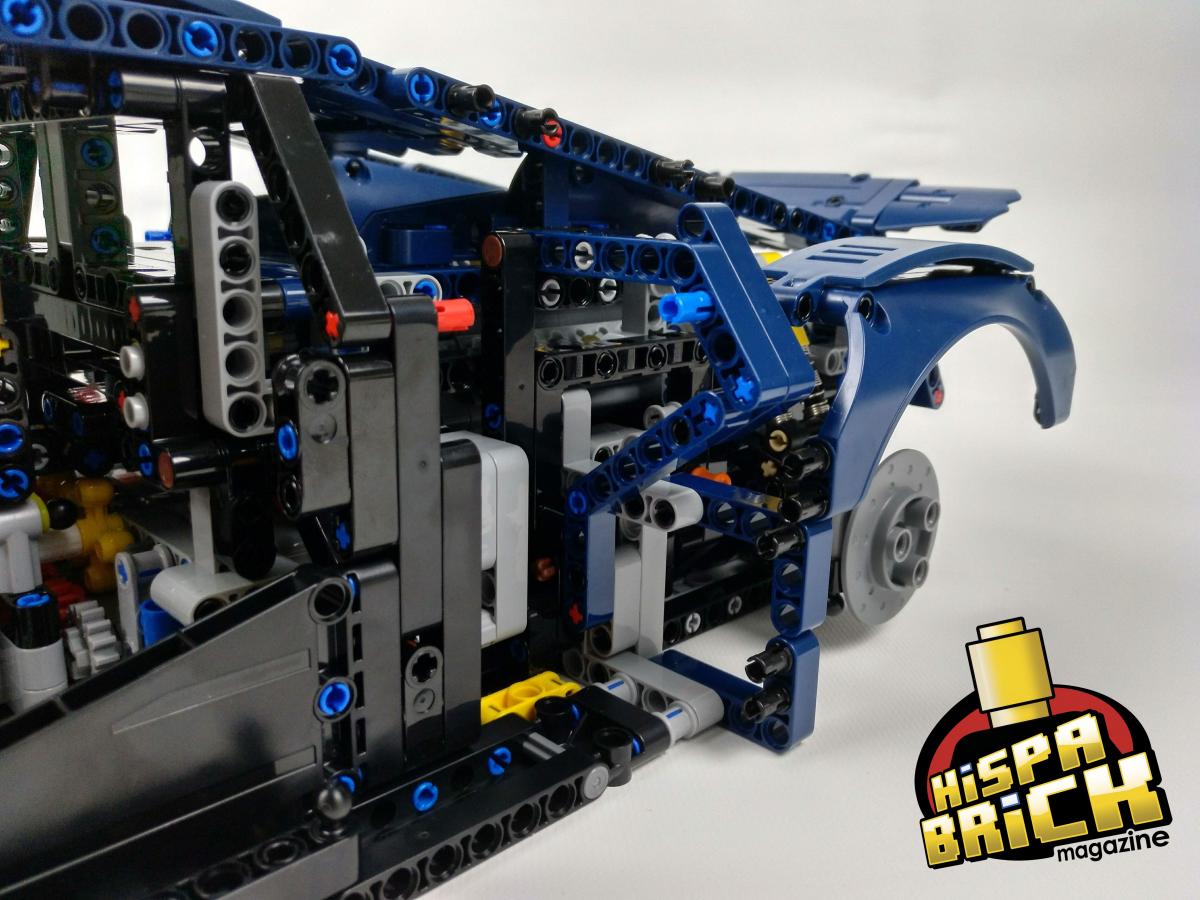
First up is the part that covers the engine but leaves plenty to be seen. This is a huge improvement over the Porsche. In the Porsche the engine block was made to look very much like the original (and the Bugatti engine block will still be made to resemble the original even more), at the cost of completely hiding the piston heads from view. This made it vey hard to see how the gears changes affected the engine speed. In this case, most of the piston heads are in pain view. Then again, the original Bugatti Chiron also very clearly shows off its engine.
Next up is the spoiler. This is a somewhat strange construction as it isn’t immediately apparent how it is supposed to work. The mechanism rotates around an axle that is only secured in place on one side and there is no knob or other action mechanism to set it in motion. Moving it manually at this stage shows approximately what can be expected, but because the mechanism is still relatively free to move backwards and not “boxed in” by the rear section it Is not entirely clear.
ACT 4 – SCENE 2
Time to build the rear lights. I have seen quite a bit of discussion around the choice of elements for the rear of the car, particularly for the rear light, s let’s have a closer look at how that part if built up.
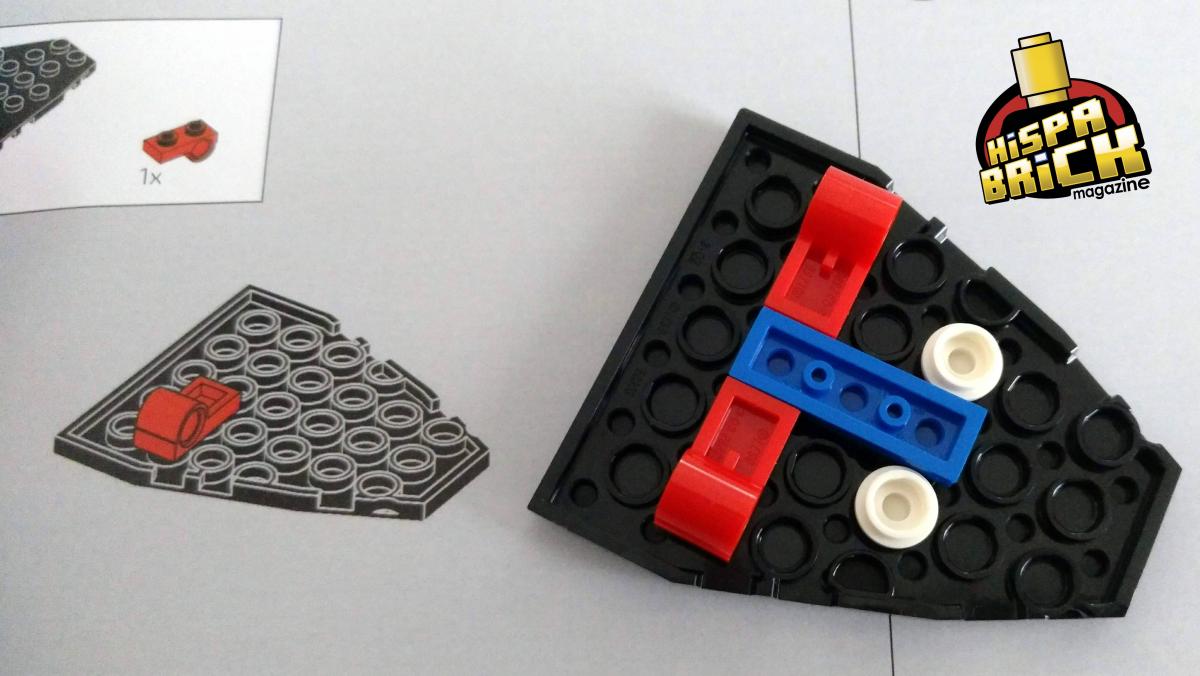
Technic builds tend to use odd numbers whereas system builds tend to go for even numbers. So what to do if you want to combine these two systems? The solution is curious and elegant at the same time: use the anti-studs on the bottom of the plate as your connection points (instead of placing the studs of the connecting elements between those anti-studs).
Then, to get back to the Technic system, the set uses round 1x1 tiles with bar to connect half pins and we are full circle.

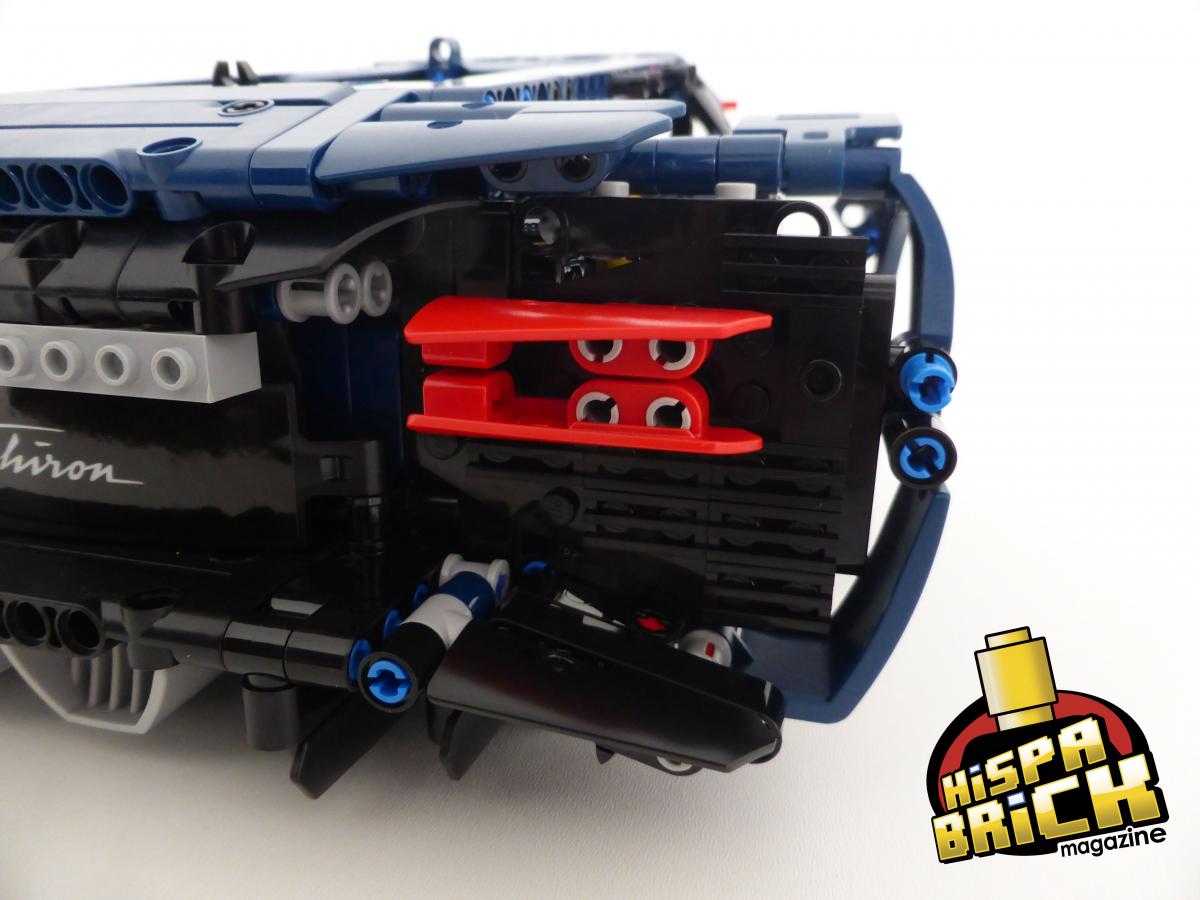
In these last two images you can also see how the small panels blow the lights are placed at an angle, creating the sensation of rounded lines.
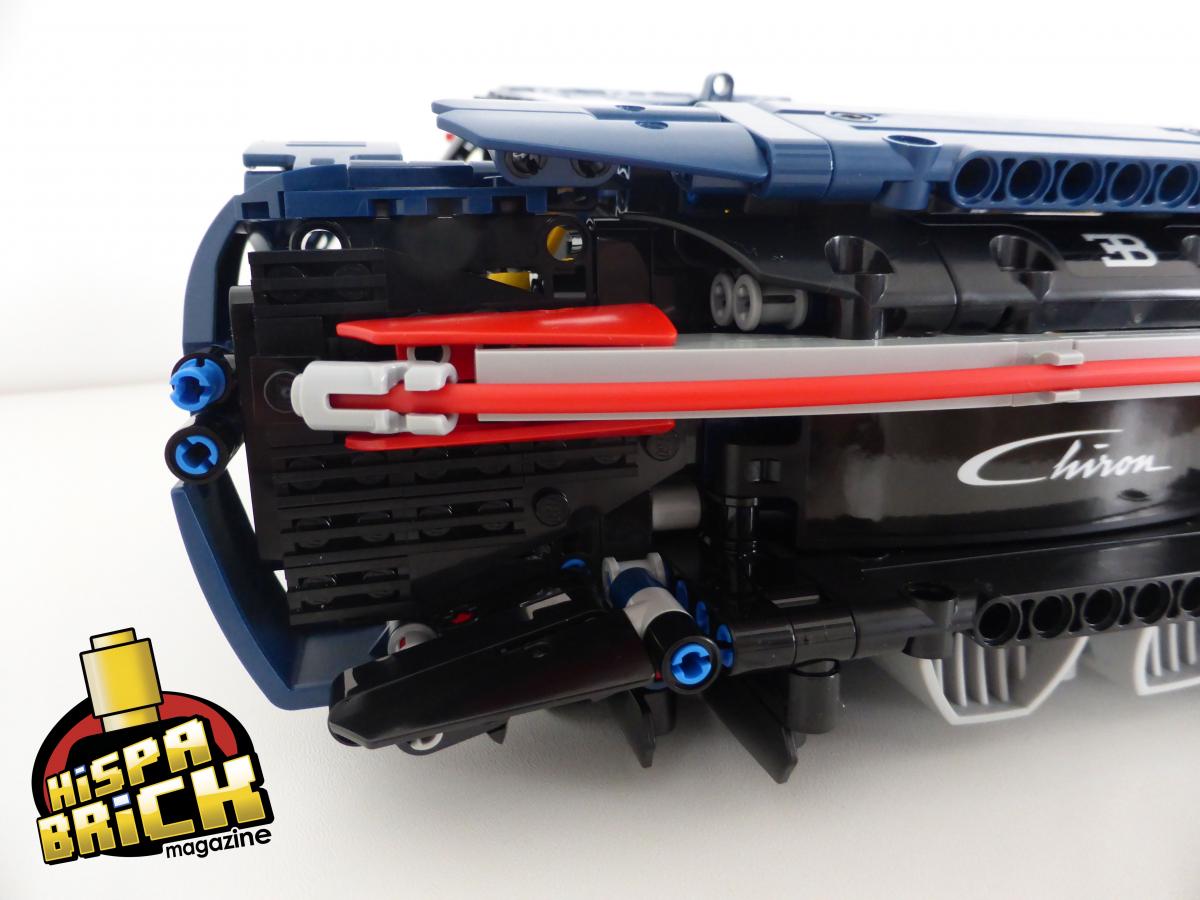
The use of a tube to represent the rear light is maybe one of the most controversial design decisions in the model (there are a few more), but in my opinion it works really well for several reasons. One reason is that tubes form part of the Technic “vocabulary” of elements and they are also used for the detailing of other parts of the car. More on that later.
The overall effect is also close to the look of the real car.
BIS
Before we move on to the next act, there is another detail that is related to the angling of parts that I referred to earlier.
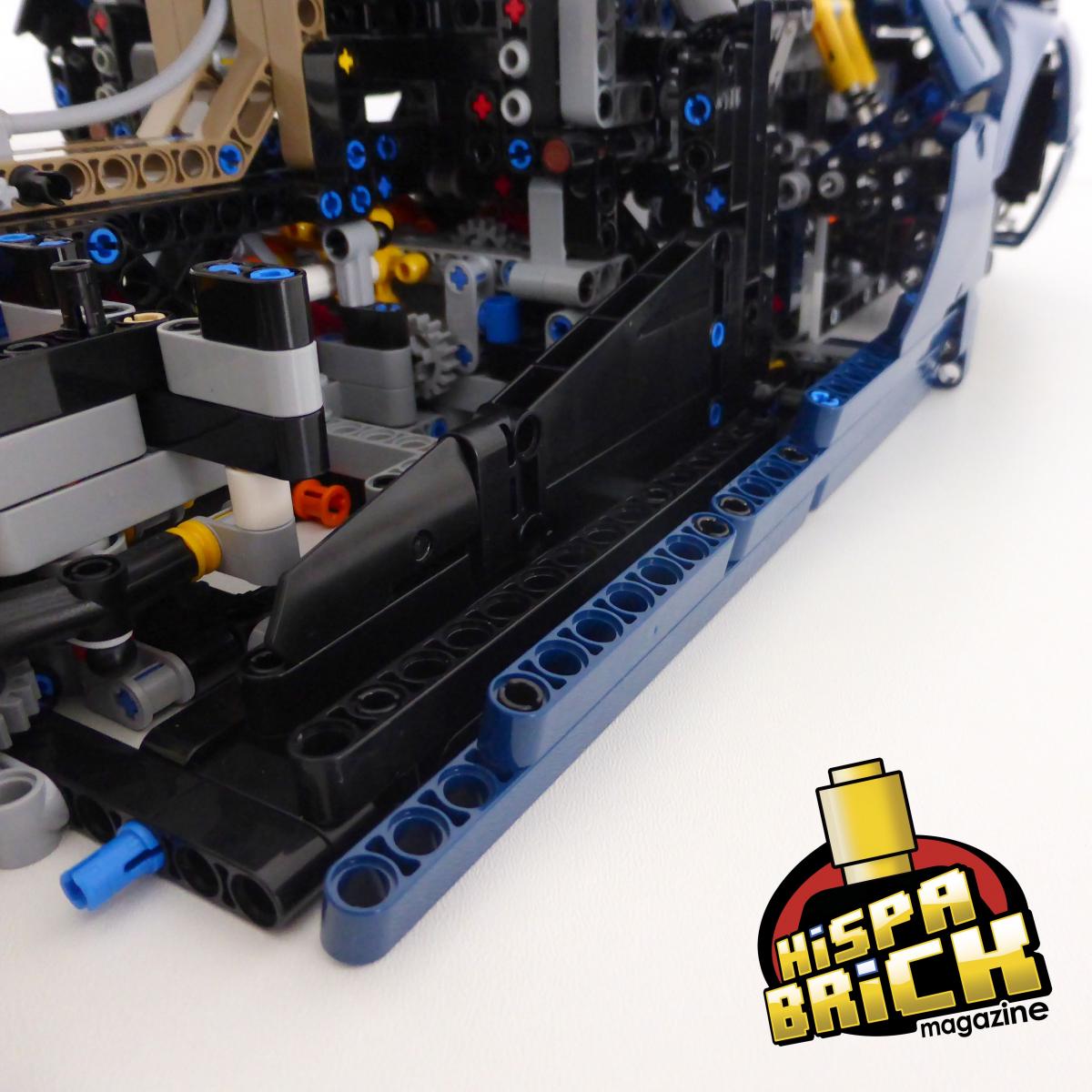
The curvature of the Chiron is very nicely achieved placing the line that will go under the door at a slight angle to further accentuate the effect of the rounded shape.
In the next act we will start working on the interior of the car – but that is for the next installment…
2351
